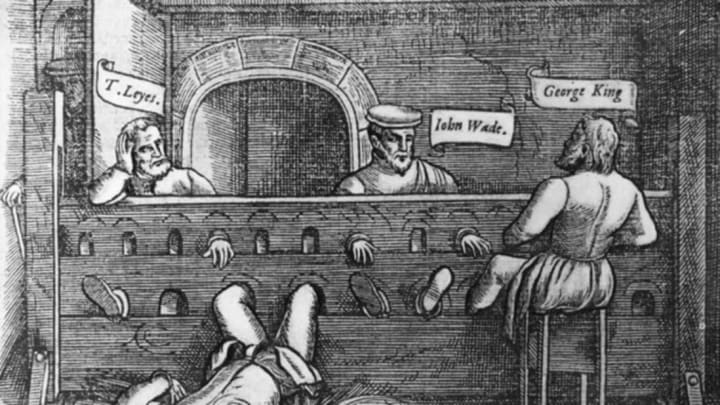“One of the earliest institutions in every New England community was a pair of stocks,” writes Alice Morse Earle in Curious Punishments of Bygone Days. “The first public building was a meeting house, but often before any house of God was built, the devil got his restraining engine.”
The stocks are those contraptions you sometimes see in movies, where some criminal has his feet and sometimes his hands and/or head bound between two boards that lock together. The stocks immobilized their prisoners and left them exposed to the elements and the scorn of passersby, who might taunt or throw garbage (or worse) at them. Not fun, but a mild punishment compared to others of the day, like branding or cropping (the removal of an ear).
For a while, the government of colonial Boston doled out punishments with a set of iron leg shackles, called bilboes, imported from England. The bilboes eventually wore down, though, and when it came time to replace them, budget-conscious colonial officials opted for wood restraints over iron and ordered a set of wooden stocks from a local carpenter.
A man named Edward Palmer took the job and soon submitted a bill for parts and labor, totaling one pound, thirteen shillings and seven pence. The officials thought this was exorbitant, and decided to charge Palmer with extortion. He was fined five pounds and sentenced to “be sett an houre in the stocks,” and got to be the first person to enjoy the craftsmanship of his product.
